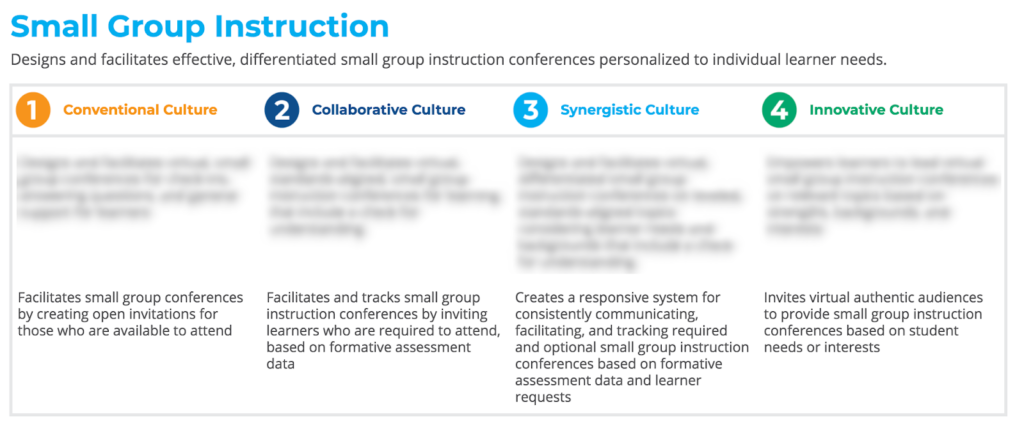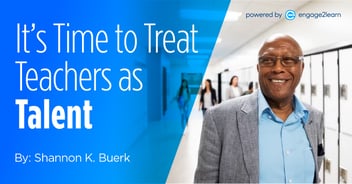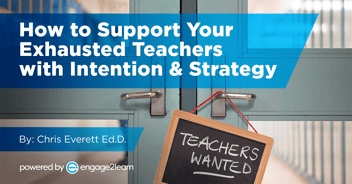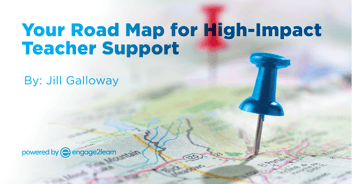How Coaching on Competencies Reduces Teacher Burnout
“As the number of choices grows… we become overloaded. At this point, choice no longer liberates, but debilitates. It might even be said to tyrannize.”
Barry Schwartz, The Paradox of Choice
Education has always been a profession of MORE. I think it comes from the urgency of wanting to do the right thing for learners, so educators tend to try to do everything. Leaders bring in new initiatives and programs and tools while most educators already have initiative fatigue.
However, no one could have prepared themselves for the overload of more programs and tools that have resulted from the onset of the pandemic, and quite frankly, educators are exhausted.
I recently read that teachers are currently juggling about seven digital tools a day in instruction, many of which they have not used before, and I’m sure that number is increasing over time. We hear so often that educators are overwhelmed, but aside from stating the fact of the matter, what are we doing to help lessen their load?
Empathizing is helpful but not enough.
Providing more options is debilitating.
Simplifying, on the other hand, is liberating and will allow educators to respond naturally to learner needs without exhausting their brainpower on the “right” approach.
So, What Exactly is Decision Paralysis?
I learned about “decision paralysis” in Chip and Dan Heath’s New York Times Best Seller, Switch: How to Change Things When Change Is Hard (a must-read if you haven’t already!). In chapter 3, "Script the Critical Moves," the duo focus on how giving people “more options, even good ones, can freeze us and make us retreat to the default plan.” They explain that “this behavior clearly is not rational, but it is human.”
At first, this seemed a bit counterintuitive, as having options seemed like a good problem to have. However, after reading one of the examples they shared, I was quick to reevaluate what I thought to be true.
The Heaths give this example: A patient suffering from chronic hip pain from osteoarthritis was told by his doctor that he would need surgery (the default plan). However, after checking with the pharmacy, the doctor was told that there was one medication that hadn’t been tried. The doctor was then faced with two options: refer the patient for surgery or prescribe the untried medication. When presented with this case, 47% of doctors chose the nonsurgical option. In a variation of the same case where two non-surgical options (two untried medications) were provided as an alternative to surgery, only 28% of doctors opted to try either medication. Why would 28% of doctors forego prescribing medication as opposed to the 47% who went the nonsurgical route?
It turns out, when faced with more options, 28% of doctors experienced “decision paralysis” and stuck with the default plan: surgery.
RELATED: 4 Ways to Support Your Exhausted Teachers with Intention & Strategy
The Power of Keeping it Simple
Naturally the concept of “decision paralysis” made me think of Steve Jobs and his uniform dress code. In interviews when he was asked about his attire, he responded to say that adopting a monotonous wardrobe of jeans and a black turtleneck reduced the number of decisions he made throughout the day, saving both time and energy for higher priorities.
In other words, our capacity for decision-making is finite. It is clear that we need to simplify! Providing “more tools in the toolbox” truly is not harmless. On the contrary, it has the potential to create opportunity cost for educators.
Of course, we can’t just stop making progress. The opportunity gaps are widening. In a recent virtual think tank, a chief academic officer from an urban district voiced what so many are feeling:
How do we reduce the burden on teachers and principals while making progress toward these seemingly insurmountable challenges?
RELATED: Cultivating Equitable Support for Teachers & Students
Aligning to & Coaching on Competencies
Imagine if instead of spending time, money, and energy on selecting and training on the latest programs and tools, educators could simply rely on ONE consistent, predictable set of instructional practices or competencies that:
- Foster life ready skills for all learners
- Provide opportunities for learners to acquire college and career readiness skills
- Increase student engagement and achievement
- Honor and build upon educators’ unique experiences and talents
- Stay consistent over time regardless of the latest educational programming or trend
Our e2L Life Ready Best Practices, for example, are a set of competencies that bring all the decision making into ONE thing, combining the extensive research on culturally relevant pedagogy with practices that impact student achievement and the reports that outline which college, career, life-ready, and social-emotional skills students need in today’s context. The 12 e2L Life Ready Best Practices are clear, easy to follow, and relevant, which is why we use them as a foundation for supporting educators!

Even better, we’ve done the heavy lifting so that teachers don’t have to. Each set of e2L best practices and competenices has a codified rubric with growth indicators to facilitate coaching, provide a basis for teachers to enhance their craft, and provide learners with the opportunities to acquire the life-ready skills they need to thrive. Each set of growth indicators omits ambiguity, making for an easier, more predictable decision-making process.
No decision paralysis here!
Plus, when paired with an all-in-one instructional coaching and talent development platform like e2L's GroweLab, educators are equipped with the guidance, resources, and support to become proficient in instructional best practices and role-specific competencies without adding to the overwhelm.
For more information regarding aligned research and culturally relevant pedagogy, check out our e2L Life Ready Best Practices White Paper.
We invite everyone to join us in identifying the key competencies you value and limiting all training, coaching, and professional development efforts to align to those competencies so teachers can see a clear progression over time in their professional growth. Let’s stop the churn of PD and start the journey towards smart professional growth.
If you’re ready to provide that just-right support & competency-based coaching for your teachers, explore partnership options with e2L today!



